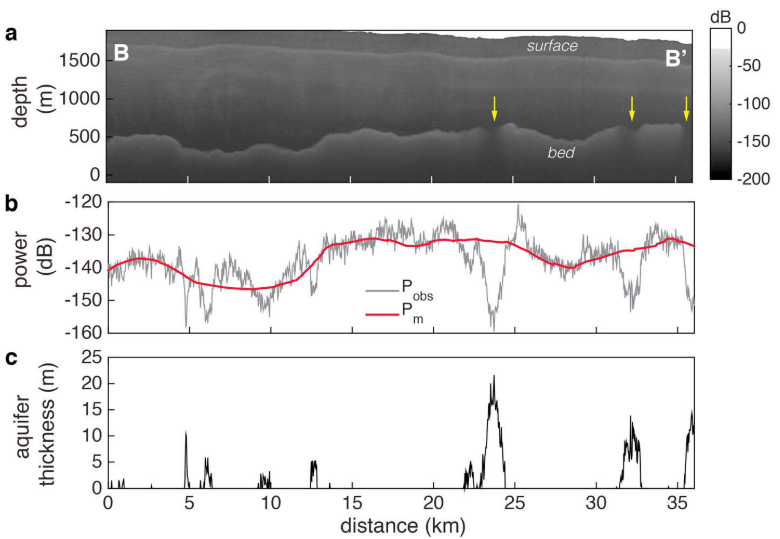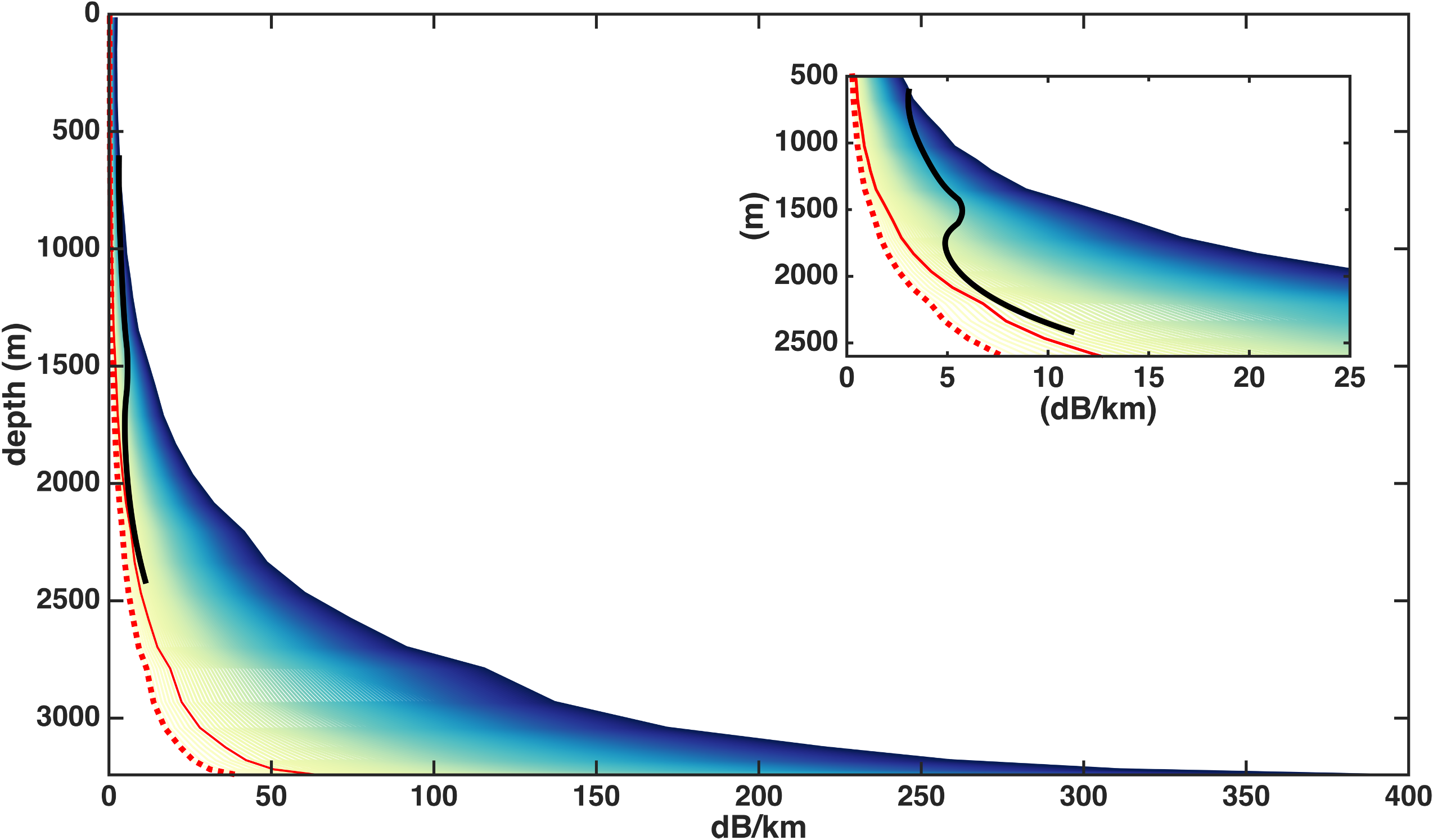Firn Hydrology
Under the right accumulation and firn property conditions, englacial firn (partially compacted snow) can store a significant amount of liquid water, forming large areas of aquifers 10s meters below the ice sheet surface. Presence of firn aquifers have found in East Greenland and in regions of West Antarctica ice shelves where surface melting is highly abundant. Depending on how much the aquifer can store water and for how long, firn aquifers may influence the impact of meltwater in modulating glacier dynamics and hydrofracturing of ice shelves. However, there is a very limited means to directly measuring the thickness of aquifer due to its attenuating properties on ice-penetrating radar.
We work on combining numerical thermomechanical model simulations of ice sheets and ice-penetrating radar sounding observations to address this challenge. We apply the NASA JPL/UCI Ice Sheet System Model (ISSM) to provide a prediction on what the ice sheet thermal structure would be without the presence of firn aquifer. These modeling results can then be compared with the radar observations of aquifers and use the discrepancies between the model and observations to constrain the aquifer thickness inversely. This method has been demonstrated successively in Helheim Glacier. We are now working to extend this model-integrated method to other regions in Antarctica to investigate the potential role of firn aquifers in influencing ice shelf stability.

Selected Publications
Ice Rheology
Ice rheology influences the internal deformation of ice, which, together with basal drag, govern the movement of glaciers and ice streams. Ice rheology depends on a range of glacial parameters, including ice sheet temperatures, ice crystal fabrics, grain sizes, etc. However, these intrinsic ice properties are often challenging to constrain from observations alone directly. Significant uncertainties in the spatial variations in ice rheology often result in numerical ice sheet models to under-or over-estimate the contribution of deformation in influencing ice flow.
To address this issue, we are currently developing new radar processing and inverse methods to extract further information about ice sheet temperatures and crystal fabrics from existing NASA and ApRES ice-penetrating radar data and potentially from new radar polarimetry observations. We will also be working closely with Ice-Climate Group to develop adjoint-based inverse frameworks that can assimilate ice-penetrating radar observations into numerical ice-sheet models such as JPL/UCI ISSM.
Collaborators: Alex Robel (EAS), Helene Seroussi (Dartmouth)

